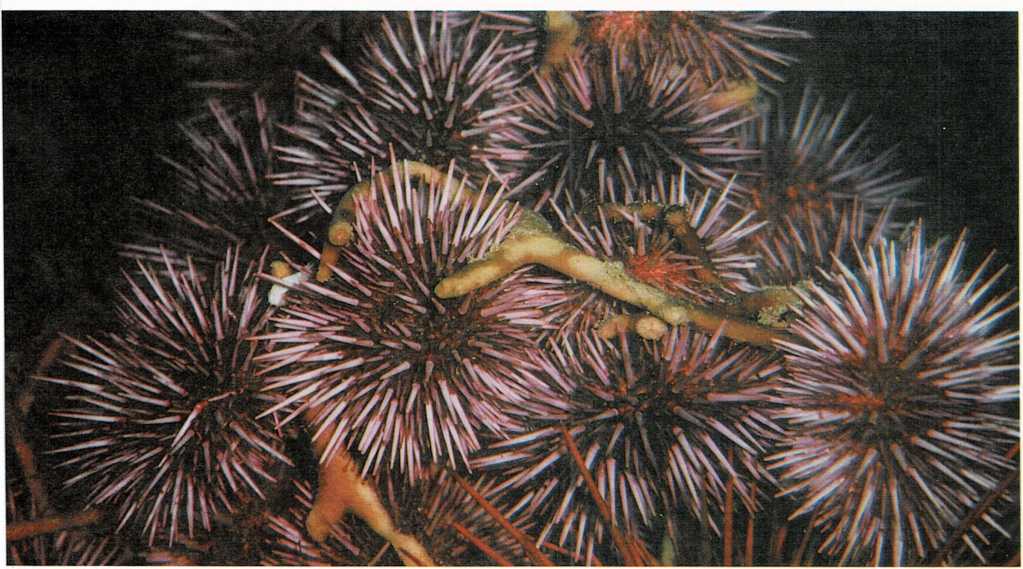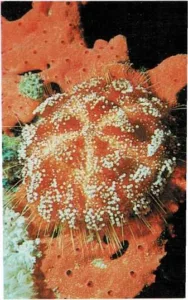
sea urchins
Pincushions of the sea
Imagine an animal that looks like a creeping pincushion! That’s what
many of the creatures called sea urchins look like.
Let’s visit a coral reef near Australia. At low tide you can look down
into the shallow water and see dozens of sea urchins. These are the kind
called hatpin urchins. They look like black tennis balls that are
covered with long needles.
The needles, called spines, are always wiggling just a bit. If your
shadow falls upon one of the urchins, all of its spines will jerk
upright and point straight toward you. \”Touch me and I’ll stick you!”
the sea urchin is telling you. And getting stuck by a sea urchin’s
spines can be very painful!
Hatpin urchins have the longest spines—as much as one foot (30
centimeters) long. Other kinds have shorter, thicker spines, more like
nails than long needles. Some have spines that look like thick crayons,
and some have short spines that are like thorns. The spines of some sea
urchins are poisonous.
As you may have guessed, a sea urchin’s spines are a protection against
creatures that would eat it. But a great many animals do manage to eat
sea urchins. Sea birds sometimes pick up an urchin by one of its spines.
To break the urchin open; they fly high into the air and drop it on
rocks. Triggerfish simply bite off most of an urchin’s spines and then
eat the urchin.
Sea urchins have round or apple-shaped bodies. Usually, they are a dark
color, such as black, brown, green, or purple. Just beneath the skin, a
sea urchin has a hard shell that covers its whole body.
A sea urchin’s mouth is on the underside of its body. It is surrounded
by a thick lip. Inside the mouth are five white, pointed teeth arranged
in a circle. Some urchins can dig holes in rock with their teeth!
A sea urchin’s many feet are also on the underside of its body. Each
foot is a little tube with a sucking disk on the end. And in among the
spines are small jointed rods. At the top of each rod there are two or
three jawlike \”hands.”
As a sea urchin creeps along the sea bottom, its \”hands” search for
tiny bits of dead plants and animals, or small animals, to eat. The food
is passed from one \”hand” to another until it reaches the urchin’s
mouth. There, the five teeth chew it up.


